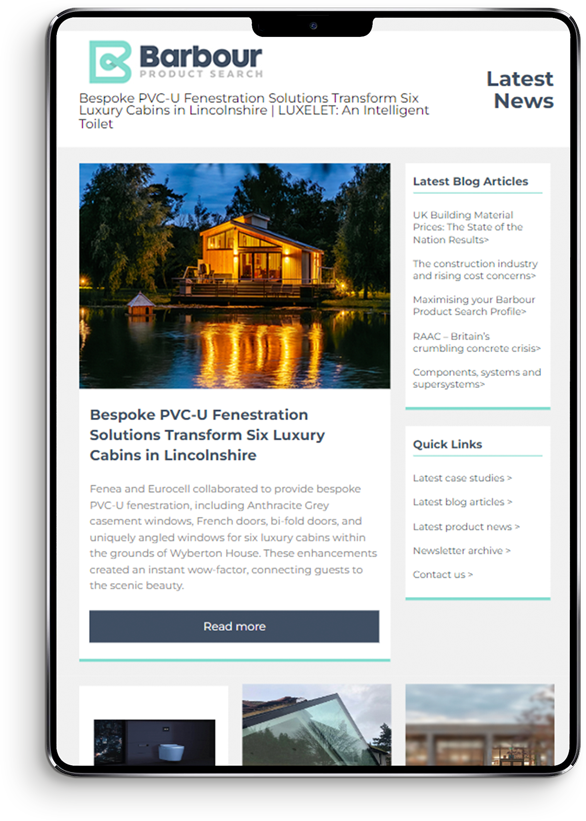With the introduction of schemes such as the Green Homes Grant and upcoming changes to building regulations as part of the Future Homes Standard, there is no doubt that heat pumps are set to play a significant role in the journey towards decarbonising heat in our homes.
As traditional refrigerants used for this technology are being phased out, Steve Keeton, training and technologies director at Vaillant, explains how the company has developed its aroTHERM plus to offer a long-term solution.
Homes – both new and existing – account for 20% of greenhouse gas emissions in the UK. To reduce the carbon footprint of our homes, the UK Government has committed to introducing a Future Homes Standard by 2025, which includes plans to phase out fossil-fuel heating from all new homes in favour of heat pumps and other low carbon technologies.
By then, we will reach the next milestone in the phase-down of F-gases as dictated in the F-gas regulations. Although the two pieces of legislations are separate, their combination has opened up a unique opportunity for Vaillant – which is more well-known as a boiler manufacturer – to introduce a different refrigerant to the heat pump market to deliver comfort in people’s homes whilst minimising their carbon footprint.
Phase-down of refrigerants
While it is commonly understood that heat pumps are a green solution, there are differing environmental impacts and operating efficiencies of the various refrigerants in use within heat pumps on the market today.
Historically, the most commonly used heat pump refrigerant was R410A, but with a GWP (Global Warming Potential) of 2088, it is currently being phased out of the market under the F-gas regulation. As a result, some manufacturers are now turning to R32 for their heat pumps.
However, this substance has a GWP of 675. So, every tonne of R32 released into the atmosphere has the same greenhouse gas effect as 675 tonnes of CO2. As a manufacturer of heating rather than cooling appliances, Vaillant is able to go down a different route - using R290 in the aroTHERM plus.
A better alternative
R290 is the technical name for the natural refrigerant also known as propane. It is already commonly used in many parts of our daily life, such as in refrigerators, air conditioning or even hairspray.
It has a GWP of 3 – 225 times lower than R32, and 696 times less than R410a. Every tonne of R290 used is equivalent to only 3 tonnes of carbon emissions from CO2, resulting in a much lower carbon footprint.
By the time the Future Home Standard comes into effect, the total amount of emissions equivalent to CO2 allowed will only be 31% compared to the baseline, with a further reduction to 21% in 2030.
So, whilst R32 is undoubtedly a greener solution than R410A, the likely level of growth for the heat pump market means that it will be unacceptable under F-gas standards with some predictions stating as early as 2024-26.
By using R290 instead of R32 in Vaillant’s aroTHERM plus, not only is the heat pump protected from the reduced availability of HFC refrigerants in the years to come, but it will also make a bigger contribution towards the country’s target to reach net-zero by 2050. What’s more, heat pumps which utilise natural refrigerants such as R290 are able to use less volume per kW, allowing them to achieve the same, or greater results than counterparts, more efficiently.
More hot water
The other key reason why R290 is a better choice is its ability to deliver more hot water to the hot water cylinder and at point of use.
Most heat pumps with R32 as the refrigerant can only handle flow temperatures of up to 65oC in a hot water system. This means that a back-up heater (direct electric immersion heater) is required in the hot water cylinder to store the hot water above 60oC – the point at which legionella bacteria is killed off. The lower flow temperature also results in less useable hot water in the tank.
The performance envelope of R290 allows the Vaillant aroTHERM plus to get hot water at 75oC straight from the heat pump’s refrigerant circuit, so that the water in the hot water cylinder will be 70oC without the use of a direct electric immersion heater to protect residents from legionella. This results in a more effective system which can deliver 376 litres of useable hot water - equivalent to about six standard showers*.
Closing the skills gap
With heating trends changing all the time and new regulations being introduced, it’s essential for installers to keep up to date. But currently, there are not enough qualified engineers to design and install the amount of low-carbon, or low to medium temperature heating systems needed in forthcoming years.
The HPA has estimated that a total of 69,500 installers would be needed by 2035 to deploy the amount of installations necessary in order for the UK to stay on track and achieve net-zero by 2050.
Vaillant, along with other manufacturers, offer a range of informative online courses to upskill installers and engineers about heat pumps and ‘green’ solutions.
But these alone, are not enough. Engineers need a wide range of up-to-date skills, knowledge and competencies that reflect the latest technologies and standards to help them to design and install quality low-carbon heating systems, such as heat pumps, for their customers.
That’s why the Government needs to encourage more investment in training, and all parties in both the refrigerant and heating industries need to work together to put in place relevant courses built on a robust qualification criteria and teaching framework.
Trusted technology
Due to the technology involved, many manufacturers of heat pumps started out in air conditioning. Vaillant on the other hand, has evolved from being a gas boiler manufacturer. This means that they have spent 140 years working with combustible gases, and are in a strong position to deliver comfort in homes in an energy efficient, quiet, and safe way.
Building on the technology of their aroTHERM split, they invested in further R&D for the aroTHERM plus to reduce sound levels even more. For example, they employed an acoustic camera for their test laboratory to locate sound emission sources. They also worked with two universities to identify frequency peaks and sounds that are annoying to the human ear.
As a result of this work, Vaillant optimised the fan and air routing to minimise the amount of noise these produced. For the refrigerant circuit, they put in vibration dampers, packed it in a sound-insulating box and used hoses that stopped vibrations transferring to the pipework. The unit also has a raised floor to absorb vibrations.
These are just some of the measures that have contributed to the aroTHERM plus’ super quietness. With a sound level of 36 dB(A) at a three-metre distance, it is now one of the quietest heat pumps available.
Heat pumps are enabling consumers to heat their homes and generate hot water with zero carbon emissions at point of use. As a company which has been synonymous with heating solutions for 140 years, Vaillant are well-placed to use a different refrigerant with a much lower GWP to truly deliver comfort without the carbon footprint.
By also providing the right training to increase and develop skills across the refrigerant and heating industry, engineers, installers and manufacturers can all work together to implement heat pump technologies to meet the climate challenge.
*Based a standard 12 litres a minute shower for five minutes.
View Vaillant aroTHERM Plus Air Source Heat Pump Product Entry




















